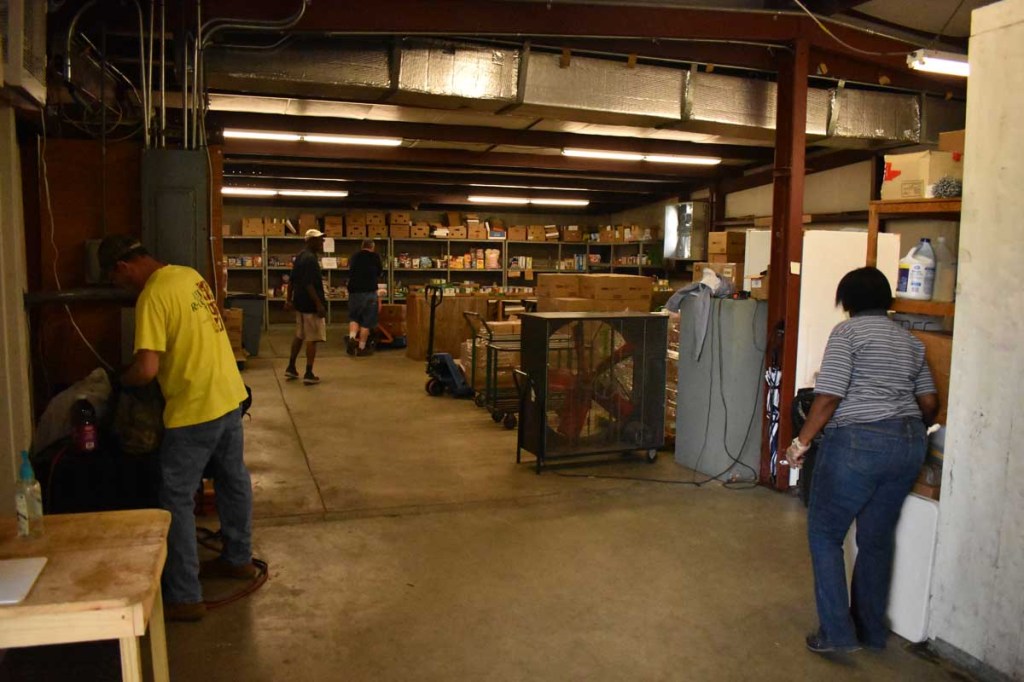COVID-19 forces Colquitt Food Bank to weigh its options
Published 5:30 pm Wednesday, April 1, 2020

- Colquitt County Food Bank volunteers check inventory after serving the bank’s last applicant of the day. Its storeroom is still full, but the food bank must watch its food supply lines as COVID-19 threatens its operating abilities.
Editor’s note: This article has been changed from its original version to clarify the relationship between the Colquitt County Food Bank and Second Harvest of South Georgia. Other edits were also made for clarity.
MOULTRIE, Ga. — The Colquitt County Food Bank first opened in 1982, but the potential effect COVID-19 could have on its food source may make it close for the first time since then.
Trending
Every 30 days, food bank applicants can receive an assortment of foods including fresh fruits, produce, bread, sweets, and meats like chicken and beef.
The need for this food was already there, Director Dr. Laura Keith said, and there’s only one direction it will go in the coming weeks.
“[For] our orders, the need is just going to keep going up and up and up,” she said. “And there are so many new people who haven’t been to the food bank before that are coming in.”
The food bank received its 2019 budget numbers recently, which saw a 38 percent increase in food orders from 2018. It’s a huge increase and one Keith expects to be trumped before 2020’s end.
COVID-19, the illness caused by the novel coronavirus, has shut down some businesses and restricted others, yielding mass unemployment. In a domino effect, more Colquitt County residents applied at the bank.
These employees were finding themselves in need for the first time. It brought attention to the need to avoid personal contact while serving a multitude of people.
Trending
Those applying for the food bank would usually sit in its lobby to fill out paperwork. In a post-COVID-19 world, the food bank is servicing 15-20 people almost every hour it’s open — 9 a.m.-11 a.m.
Keith said they started blocking off the front door and using the window as a drop-off point for paperwork. A food bank volunteer would then gather the food to give.
This food is based on family size and would normally be enough to feed them for five days.
“We’ve been able to provide that for a long time now, but I’m just not sure what’s [to come],” Keith said. “We’re just going to have to see cause I’d hate to have to just close down.”
That may be the reality it’s facing.
The food bank was able to reach more county families when it partnered with the Colquitt County School System for Phase 1 of its meal contingency plan, but that was only a four-day deal utilizing school supplies, not their own.
Keith said the food bank is usually — and still is — acquiring food products, like meats, from Second Harvest of South Georgia, a food bank in Valdosta, anywhere from two to 19 cents a pound.
“There’s nowhere else that we could access food for that kind of price,” she said, fearing collapse if Second Harvest is gone.
The food itself is actually free, according to Eliza McCall, chief marketing officer of Second Harvest of South Georgia, but local food banks are asked to pay a small fee to cover warehousing and logistics.
“However, Second Harvest of South Georgia is providing CCFB with emergency pantry boxes for COVID-19 response at no charge whatsoever,” McCall said. “Thus far, we have delivered 170 boxes with plans to send more if they are needed.”
Local donations could save the food bank but frequent donors, such as Publix, Wal-Mart, National Beef, and Sanderson Farms, have decreased, Keith said. Should anyone want to donate now, however, Keith said give monetary donations.
“Our purchasing power is huge through Second Harvest,” she said. “If you go to the grocery store and buy me 10 jars of peanut butter, that’s going to be over $20. Say it’s 20 pounds [of peanut butter], I can get that for $2 at the most.”
Restaurants could be an ideal donation source, but the food bank doesn’t take pre-cooked meals. It doesn’t have space or manpower to do so.
Other supplies are also in need. The volunteers have gloves, but masks and touchless thermometers are needed.
Keith said they are trying to protect their manpower — the volunteers — by planning to implement a different delivery system. Applicants would stay in their car while volunteers go to them, take their information, then bring food back to their vehicle.
The bank has also lost some volunteers since volunteers through the probation office or federal work programs were called off. Some have continued working on their personal time, however.
“It’s getting kind of risky for those people just to come in here and volunteer like that. We’ve just kind of limited it to the regular volunteers that come in,” Keith said.
She’s currently applying for an emergency grant from United Way and is monitoring the food bank’s situation, preparing for both the best- and worst-case scenarios.




